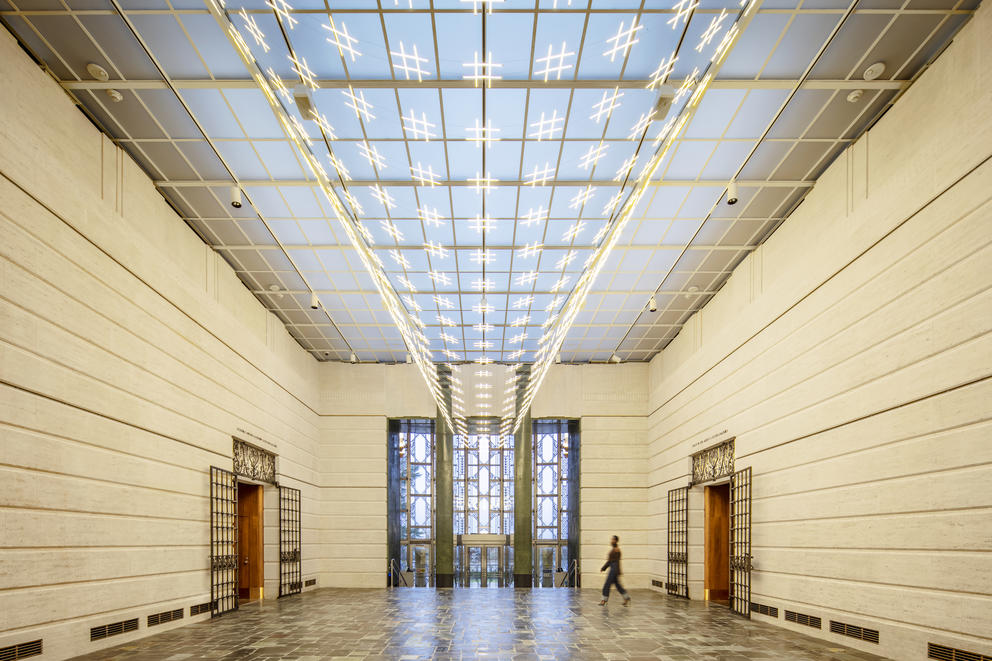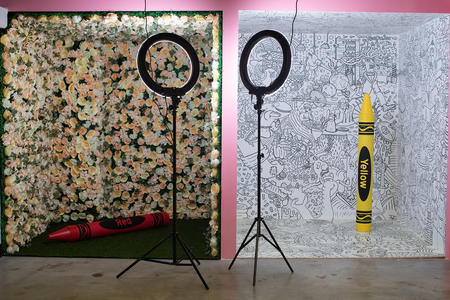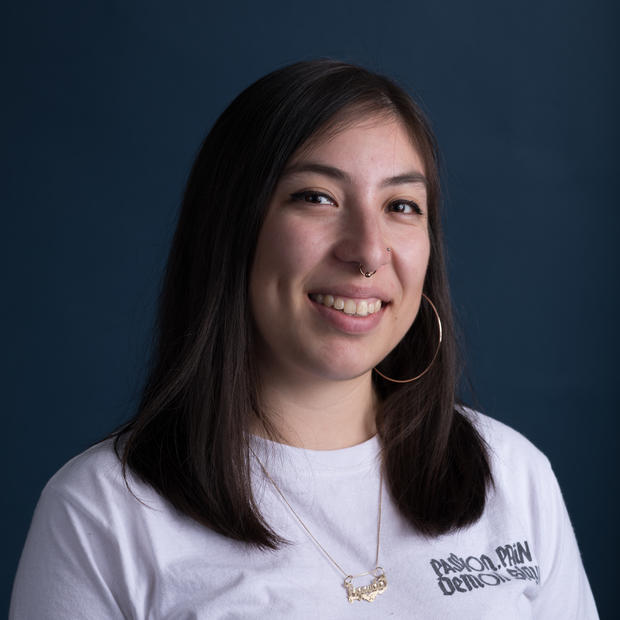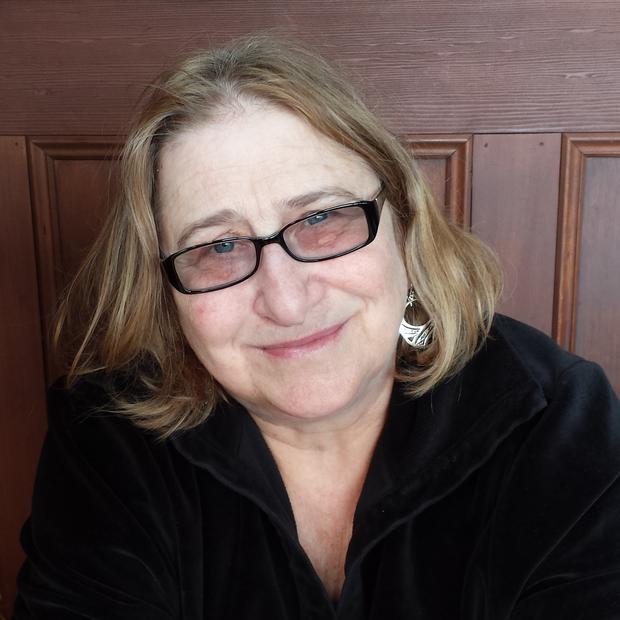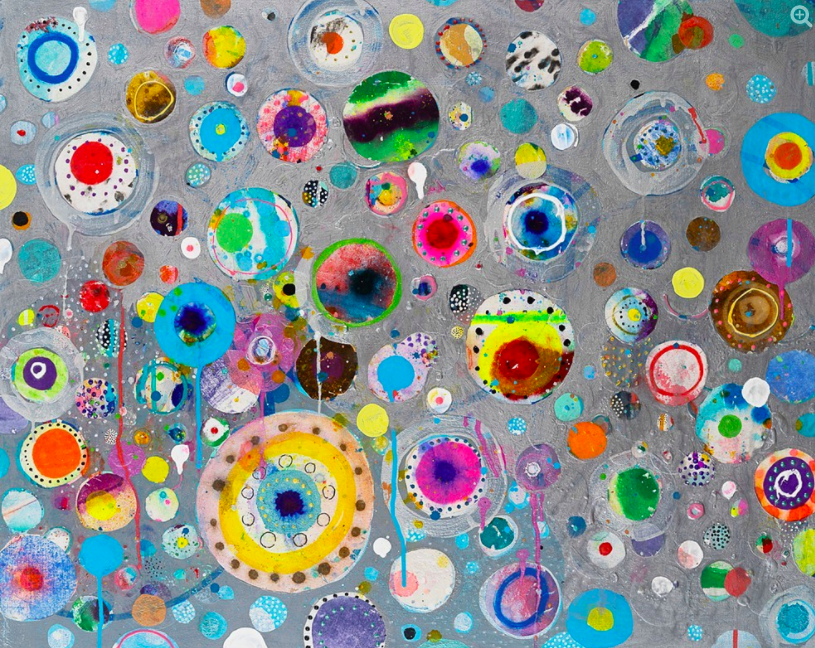
First Thursday Art Walk picks
Remember colors? Colors beyond gray and mossy green? They are out there! And many can be found at tonight’s art walk, so all the soggy tromping between galleries will be worth it. For riotous explosions of color, check out local artist Liz Tran’s boisterous opening at SAM’s Taste Cafe. Her Cleave the Moon show (up through May 3) throbs with spheres, splats and drips in every hue. Also electric (and right near Taste): Ling Chun’s work in the group show at Traver Gallery (through Feb. 29). Her alien hybrids combine painted ceramic shapes with neon colored hair extensions in pieces like “Plop,” “Lolp” and “Pine Apple.” And at Glass Box Gallery near the INScape building (if you didn't wear galoshes, you might want to catch a bus from downtown to the ID), Seattle up-and-comer Nikita Ares shows Chada!, a showcase of her trippy “vibrations of nature” (through March 14). This is nature as seen through a kaleidoscopic lens, or maybe an entirely different eye structure. We need this. –B.D.
If you go: See links embedded above.

Underbelly
Washington State Parks have found a solution to all this wet weather: wade into it wearing flippers. In a recent blog post, the agency notes that now is the perfect time for scuba diving, as local waters are cold and clear. But if you’d prefer to walk underwater without an air hose, immerse yourself in Oxbow Gallery’s gorgeous installation. For Underbelly, local artists Lauren Boilini and Henry Cowdery completely transformed the high-ceilinged, white-walled Georgetown gallery into the bubbling underwater world of a “whale fall.” The duo notes that just as a fallen tree becomes a nurse log that feeds a forest, a dead whale on the seafloor sustains an oceanic ecosystem. Featuring schools of fish made from recycled paper pulp and wax, the exhibit offers a stunningly rendered — and dry — undersea view. —B.D.
If you go: Underbelly at Oxbow Gallery. Open Feb. 7, noon-8 p.m., and Feb. 8, during Georgetown Art Attack, 6-9 p.m.

The American War
The war in Southeast Asia that lasted from 1955 to 1975 is known by several names. In America, it’s referred to as the Vietnam War. But to Southeast Asians, it’s known as The American War. And to the Hmong people of Laos, the ethnic minority recruited by the CIA to fight for the United States, it’s known as the Secret War. The American War, a new show at King Street Station’s ARTS gallery, explores the devastating conflict and its lasting repercussions through two vastly different lenses: Hmong photographer Pao Houa Her and Seattle-born photographer Sadie Wechsler.
The two artists, now close friends, first met while attending graduate school at Yale University. Eventually Houa Her invited Wechsler to join her on a visit to Laos. (Laos is where Houa Her does much of her photographic work, focusing on the Hmong community; it’s also the region that took the brunt of bombings.) Both photographers developed their own projects from their trip, and while their backgrounds are drastically different, their work shares a common thread: the residual effects of war. In the show, Wechsler’s photo collage, “Guards of the Oil” speaks to an altered landscape with a hidden legacy. The image shows a row of barrels of oil from the Ho Chi Minh Trail — a strategic military trail the Hmong people were tasked with clearing. These are juxtaposed against the Udan Thani Airport in Thailand, a front-line U.S. airbase during the war. Portraits by Houa Her present Hmong veterans in unofficial uniforms and self-awarded medals, one proudly donning a U.S. flag pin. (Hmong soldiers have never been recognized by the U.S. military for their service in the war.) Today, the U.S. is home to 180,000 Hmong people, while in Laos, undetonated bombs still hide in the landscape and threaten lives. The American War brings home the global ramifications of a war that ended more than 40 years ago. –A.P.F.
If you go: The American War at ARTS King Street Station, Feb. 6 through March 21, Tuesday through Sunday, 10 a.m. to 6 p.m. (Free)

Art Collecting 101: Getting Started
“The art world can be intimidating for anyone who isn’t already in the creative industry,” says Judith Rinehart, owner of the new Pioneer Square gallery J. Rinehart. “There are a lot of misconceptions about who buys art and why,” she adds. “With the demographics in our city shifting to a younger crowd, purchasing fine art either isn’t on their radar or automatically seems out of reach because of those misconceptions.” That’s why Rinehart has organized a series of talks called Art Collecting 101, “your source for all the information you wanted to know about collecting art, but were too afraid to ask,” as she bills it. The first panel, “Getting Started,” features local collectors Tiffany Moss and Paul Drinkwine, as well as Seattle artist and collector Shaun Kardinal. The group will discuss how, why and where they collect art and share advice for new and aspiring collectors of all ages and financial abilities. –M.V.S.
If you go: Art Collecting 101: Getting Started at J. Rinehart Gallery, Feb. 8 at 4 p.m. (Free)
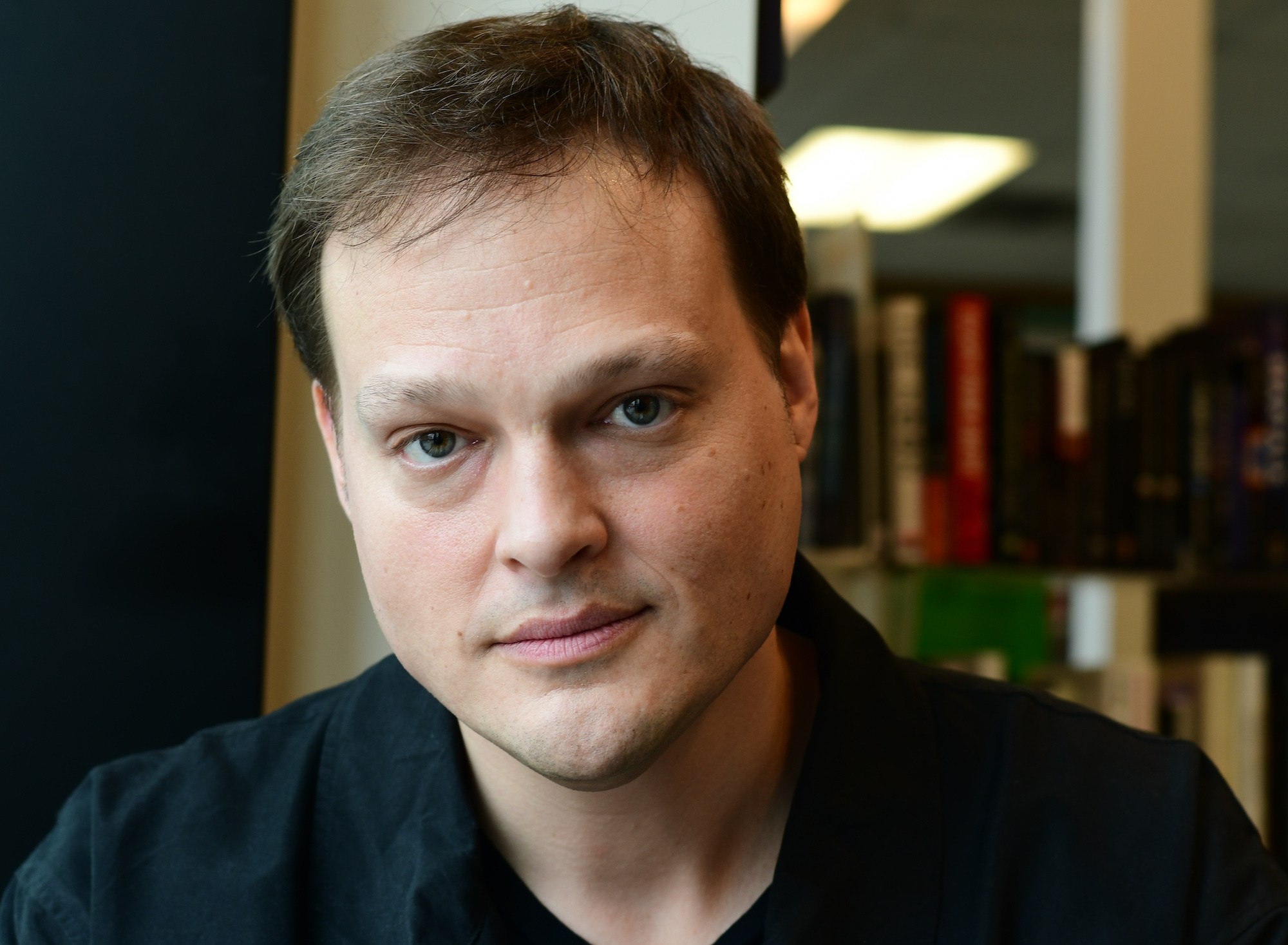
Garth Greenwell: Cleanness
“My little book of gay sex love songs.” That’s how the American novelist and poet Garth Greenwell recently characterized his highly praised book Cleanness on Twitter. But don’t let the flip descriptor fool you: The novel, which follows an American teacher navigating loss, love, sex and connection in the crumbling city of Sofia, Bulgaria, received rave reviews from pretty much every outlet imaginable. “Every detail in every scene [in Cleanness] glows with meaning,” said The New York Times Book Review. “It’s as if, while other writers offer data, he is providing metadata.” Given that the novel has also recently made its way to the bestseller lists, it’s safe to say that although slim and trim, with only nine stories, Greenwell’s “little” book has struck a major chord. –M.V.S.
If you go: Garth Greenwell at Elliott Bay Book Company, Saturday, Feb. 8 at 7 p.m. (Free)
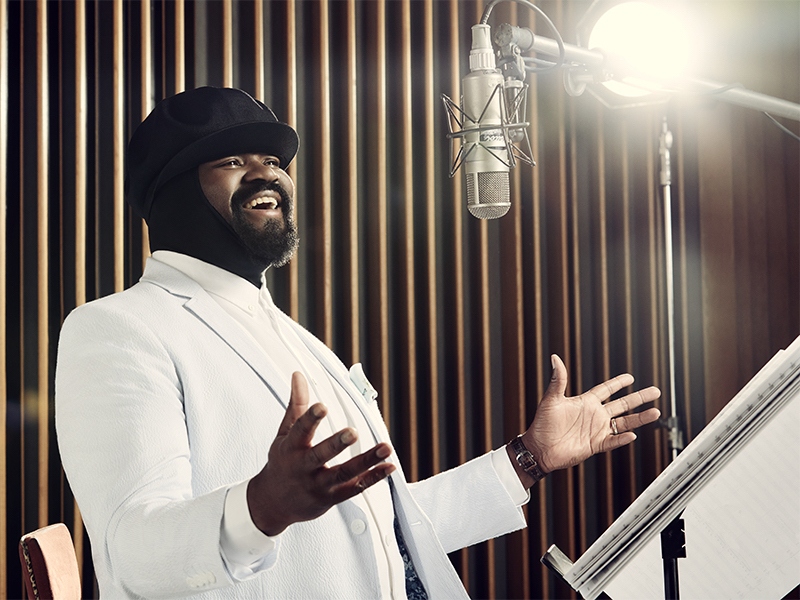
Gregory Porter
A former football player with a deep, brandied voice, this jazz singer is one of the best of his generation. Whether he is tenderly covering a Nat King Cole favorite like “Smile,” taking a breezy stroll through the swinging Ramsey Lewis hit “The In Crowd” or pouring his soul into the original song ”Come to the Alley,” which speaks truth to power and advocates generosity so beautifully, Porter is a vocal virtuoso. The last time he came to the Moore Theatre, a nasty cold kept him from singing a full set — and he still sounded great. This week at the Moore, hopefully in good health, he’ll be even better. –M.B.
If you go: Gregory Porter at the Moore Theatre, Feb. 8 at 8 p.m. ($35-$45)

Seattle Asian Art Museum
After three years — and $56.5 million in renovations — the refreshed and reimagined Seattle Asian Art Museum reopens for visitors this weekend. (But if you didn’t already reserve one of the 10,000 free tickets available for Saturday and Sunday, you’re outta luck until SAAM opens for regular hours starting Feb. 12.) While the 1933 art deco building has always been impressive on the outside (hello, camels!), visitors may recall that the interior felt a bit dark and warrenlike, partly because skylights had been covered to protect delicate artworks. But local architecture firm LMN has pulled the veil from the space, bringing in light wherever feasible, from the front windows to faux skylights to a glass box of daylight added to back — like a crystal clear treehouse suspended above Volunteer Park. The positively glowing central courtyard now features an LED light installation by Seattle-born Kenzan Tsutakawa-Chinn, grandson of legendary local sculptor George Tsutakawa. Called “Gather,” the hammock of lit hashtags is a reference to Japanese textile design, and is meant to draw visitors’ eyes outside, to Noguchi’s “Black Sun,” which in turn, frames the Space Needle — creating a long sightline of Seattle landmarks. While old-school museumgoers may be miffed by the organizational scheme (thematic, such as “color in clay” vs. chronological or regional), the effect is one of a convivial wedding party, where guests discover surprising shared connections. -B.D.
If you go: Seattle Asian Art Museum, opening weekend (Feb. 8-9) sold out, regular hours starting Feb. 12. ($0-$14.99)
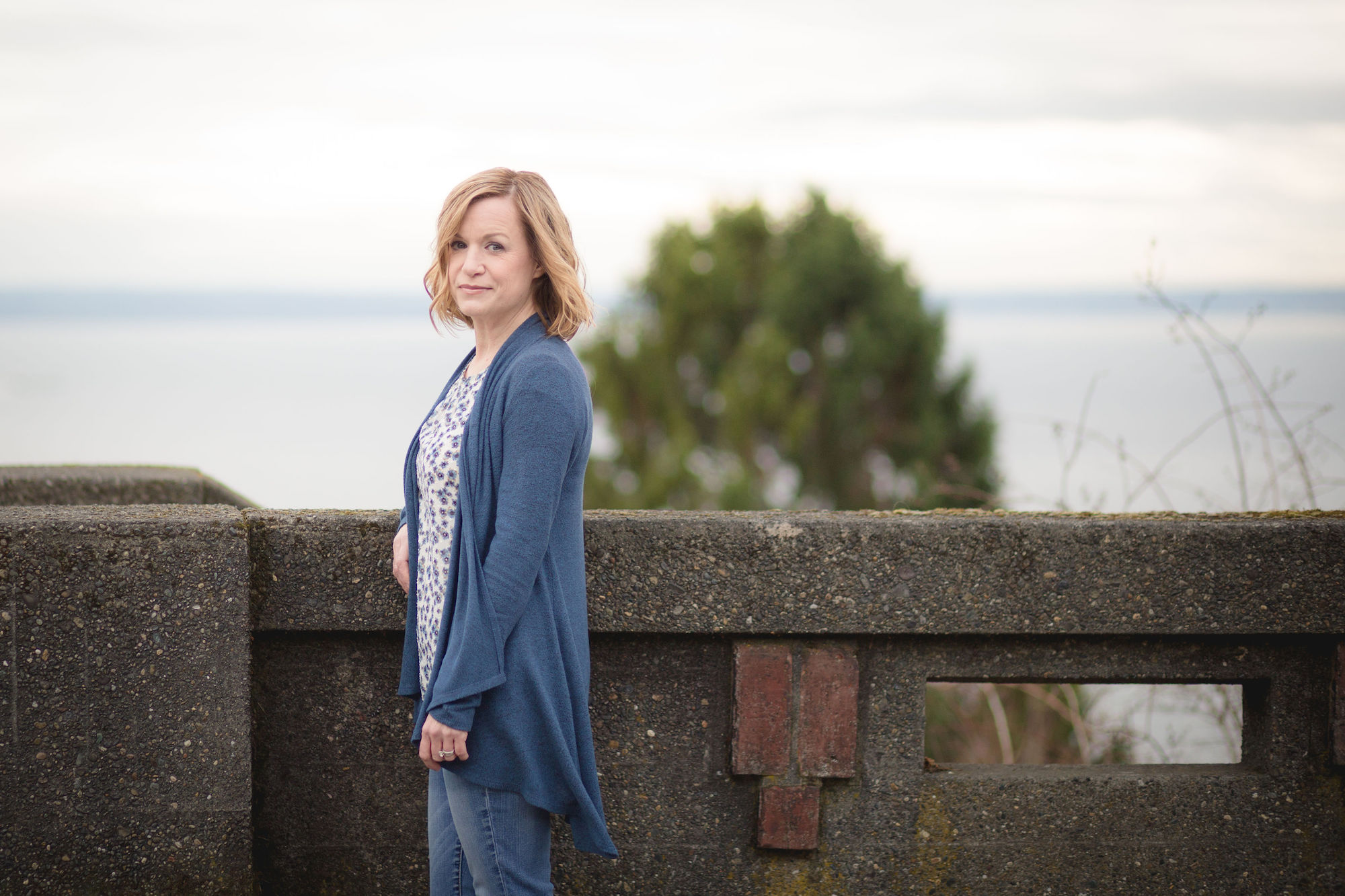
Maureen R. Elenga: Bridges of Seattle
Portland may boast about its bridges, but Seattle's spans aren’t too shabby. Take the Alaskan Way Viaduct for example — and, yes, viaducts are considered a type of bridge. Before it came down, residents rushed to the scene to party on the city’s ugliest arterial. But while the Viaduct is gone, Washington is home to nine bridges that are on the National Register of Historic Places, including all four of Seattle’s bascule bridges along the ship canal. Architectural historian Maureen R. Elenga will tell you all about them — their significance and impact on regional history — in her new book Bridges of Seattle. The book discusses the role bridges played in the city's massive land regrades and waterway cuts, and features never-before-published photos from the Seattle’s Municipal Archive. Elenga, who previously wrote a guide to Seattle architecture, will appear at Elliott Bay Book Company to help bridge the knowledge gap about Seattle's bridges. –A.P.F.
If you go: Elliott Bay Book Company, Feb. 9 at 3 p.m. (Free)
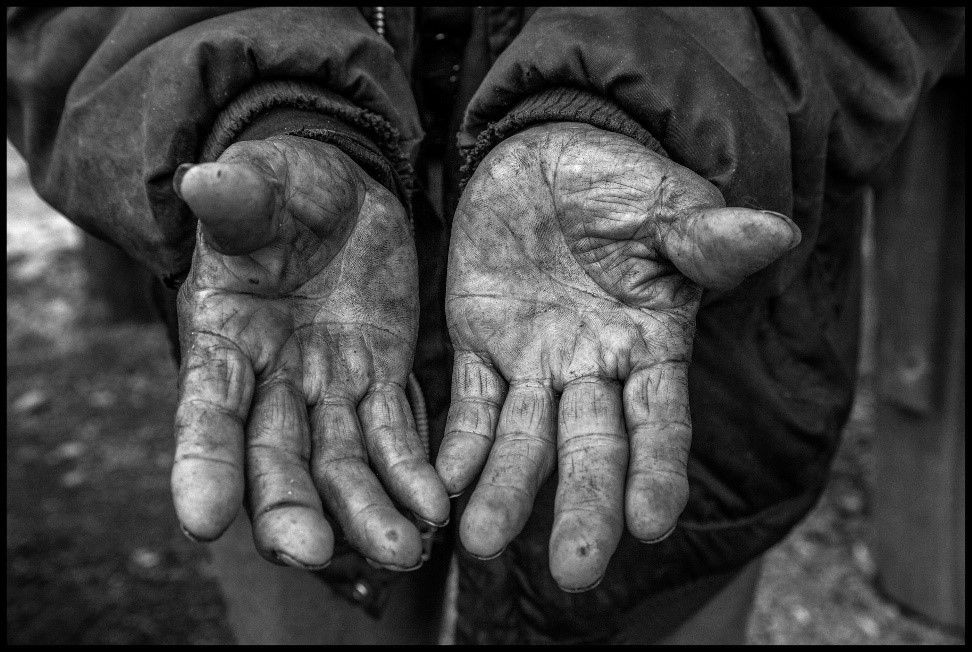
The Fight in the Fields: Migrant Workers Fight for Their Rights in Washington State
The lives of the people who help bring food to dining room tables across the U.S. often go unseen. But immigrant farmworkers — their struggles, joy, and grit — deserve acknowledgment and appreciation, and the Washington State History Museum’s new exhibit sets out to do just that. The current exhibit, In Washington's Fields, features black-and-white photography by longtime activist, union organizer, author and photojournalist David Bacon. His stills of farmworkers shine a light on the grueling nature of their jobs, and their efforts to demand better working conditions. For this special conversation, The Fight in the Fields, Bacon, who has written four books on immigration, trade policy and its influence on the border, will be part of a panel alongside two local labor organizers: Rosalinda Guillen, director of Community2Community, and Ramon Torres, president of the farmworkers union Familias Unidas por la Justicia. Joining them is Vanessa deVeritch Woodside, an associate professor at the University of Washington, Tacoma. Following the panel, Bacon will personally guide a tour of his photographs on view at the museum. –A.P.F.
If you go: Fight in the Fields panel discussion, Feb. 11, 5:30 - 8 p.m. (Free) The exhibit In Washington's Fields runs at the Washington State History Museum through May 10.

Spirited Stone: Lessons From Kubota's Garden
Kubota Garden, a lush, 20-acre public park in Rainier Beach, is often called “Seattle’s most beautiful and least known park.” Now, the latter part of that description is changing, thanks to a new book and documentary about the garden’s founder and master gardener Fujitarō Kubota and the park’s 90-year history and continuing communal legacy. Spirited Stone: Lessons From Kubota's Garden (to be published Feb. 11 by Seattle's Chin Music Press) features essays, stories, poems and photographs celebrating the park’s legacy, including by Washington State Poet Laureate Claudia Castro Luna, National Book Award winner Charles Johnson, Hotel at the Corner of Bitter and Sweet author Jamie Ford and local writer Alex Gallo-Brown. Don Brooks, Kubota Garden's longtime head gardener, will introduce the book during a launch party at Third Place Books in Seward Park.
Meanwhile, keep an eye on the Kubota Garden Foundation's calendar. The nonprofit's self-produced documentary about the garden, Fujitarō Kubota and His Garden, has consistently drawn sellout crowds since premiering in December. The organization recently added more screenings to accommodate the high demand, including on Feb.16 and April 25, with even more in the works. –M.V.S.
If you go: Spirited Stone at Third Place Books Seward Park, Feb. 11 at 7 p.m. (Free) Fujitarō Kubota and His Garden at Rainier Beach Community Club, Feb. 16 at 4 p.m. (Free).
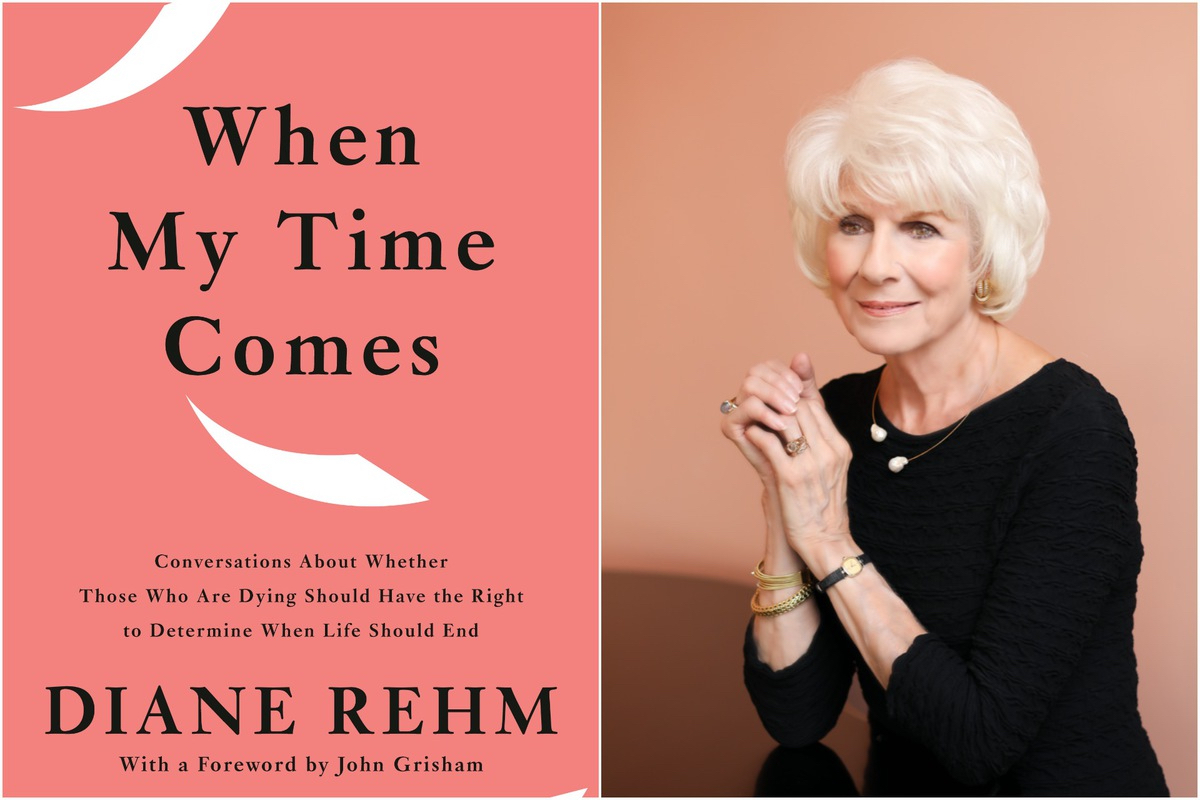
Diane Rehm: When My Time Comes
“Death was part of my life at an early age,” writes renowned radio host and author Diane Rehm in her new book, When My Time Comes. She describes her mother's suffering on her death bed, in pain, begging to die. “To … have had to watch her suffer for so long became the beginning of my passionate belief in the right to die.” In the book (a TV documentary of the same name is in the works), Rehm interviews terminally ill patients, physicians, ethicists, spouses and relatives of the terminally ill, as well as people who oppose the national “right to die” movement for accessible end-of-life drugs. At Town Hall, Rehm will discuss how death is an integral part of life, and why “a good death is one without suffering.” –M.V.S.
If you go: Diane Rehm with Ross Reynolds: When My Time Comes at Town Hall, Feb. 12 at 7:30 p.m. ($5)
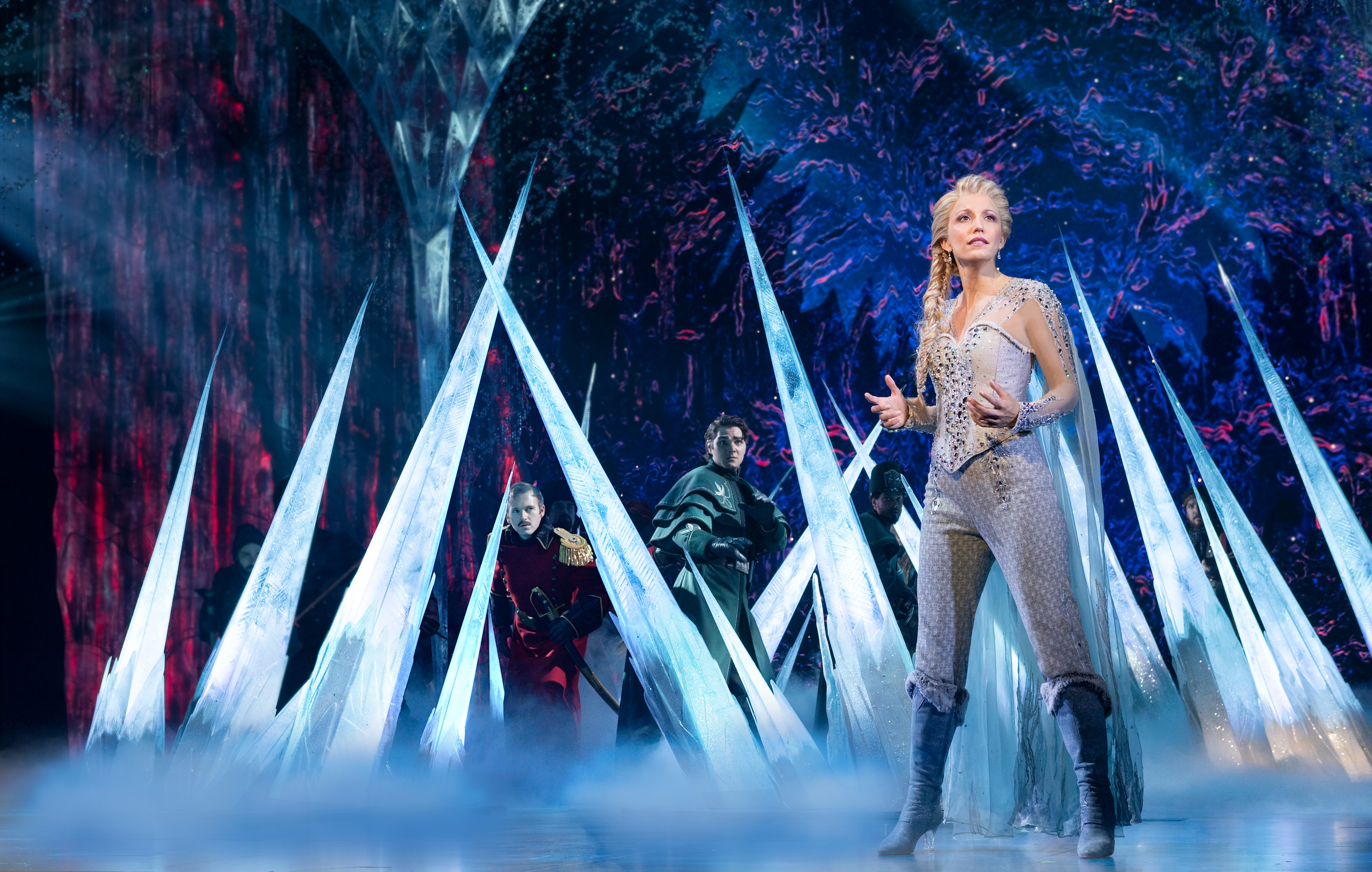
Disney’s Frozen
It all started with the wintry Hans Christian Andersen fairy-tale, “The Snow Queen.” Over a decade later Disney got into the act, adding a sister twist to the story of a princess (Elsa) who possessed the magical ability to conjure ice and snow. The resulting animated 2013 film Frozen was an international winner, raking in over $1.2 billion and turning the big ol’ ballad “Let It Go” into an Oscar-winning hit for singer Idina Menzel, from the song score by Robert Lopez and Kristen Anderson-Lopez. (You couldn’t escape hearing that earworm tune a few years ago, even if you were living on Mars.)
But true to Disney, there was more to come: an animated sequel (Frozen 2), and the live action, 2018 Broadway show that won a Tony nomination for “best musical,” and which critics praised for the sparkling, go-for-broke design and special effects. Now the family-oriented spectacle is having its first touring engagement in Seattle, a prospect sure to delight the prime fanbase of little girls (and not-so-little-girls) who love the franchise. Tip: Try a weeknight show for the best range of seating choices. –M.B.
If you go: Frozen at The Paramount Theatre, through March 1. ($25-$175)
Get the latest in local arts and culture
This weekly newsletter brings arts news and cultural events straight to your inbox.

